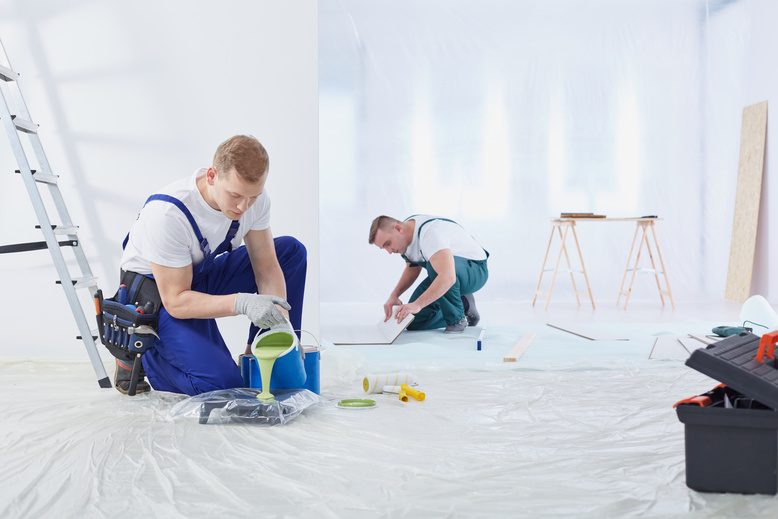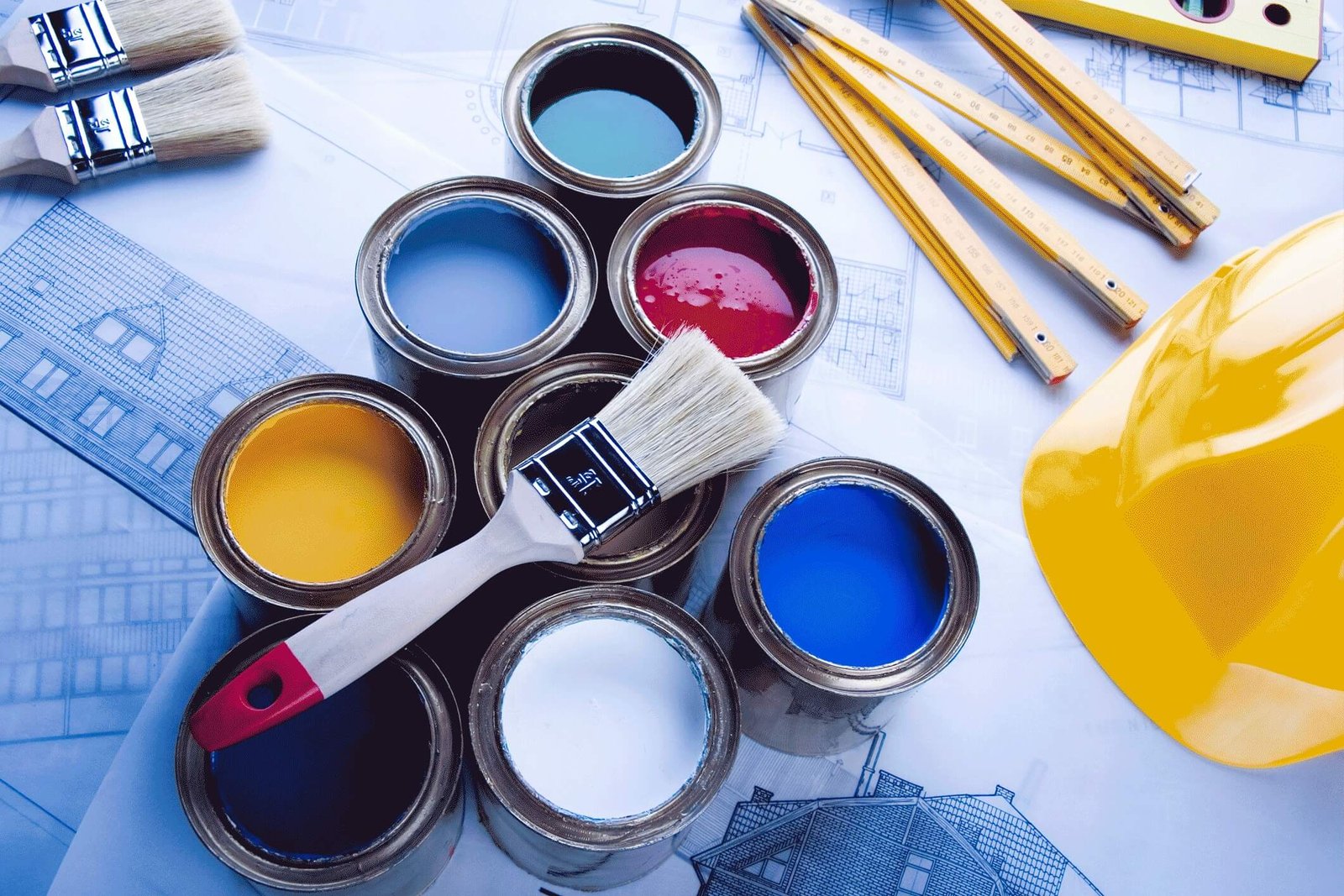Transform Interiors and Outsides with Cleveland Metro Painting Contractors Experts
Transform Interiors and Outsides with Cleveland Metro Painting Contractors Experts
Blog Article
Step-by-Step Techniques for Reliable Wall Paper Removal in your home
Getting rid of wallpaper can frequently be an overwhelming task for home owners, yet with the ideal approach and strategies, it can be achieved efficiently. Comprehending the kind of wallpaper you are dealing with is important, as this will certainly dictate the techniques and devices required for effective removal.
Analyzing Your Wallpaper Type
Analyzing your wallpaper type is a critical primary step in determining the most reliable removal method. Different wallpaper materials call for distinctive techniques to ensure successful elimination without harming the hidden surface areas. Common types of wallpaper consist of paper, fabric, and vinyl, each presenting unique obstacles.
Plastic wallpaper, known for its sturdiness and dampness resistance, typically needs soaking and scuffing to get rid of. On the other hand, typical paper wallpaper is generally simpler to peel yet may leave sticky residue that requires additional cleansing. Textile wallpaper, while much less typical, can be extra intricate to get rid of, usually calling for cautious handling to avoid tearing.

Strippable wallpaper simplifies the removal process, while non-strippable varieties may need more intensive strategies, such as steaming or chemical solutions. By properly determining your wallpaper type, you can customize your technique, reducing damages to walls and making sure a more reliable elimination process.
Celebration Necessary Devices
Before starting your wallpaper removal job, it is vital to collect the required devices to guarantee a reliable and smooth procedure (Cleveland Metro Painting Contractors). A well-appointed toolkit will promote the removal and decrease possible damages to your wall surfaces
Start by acquiring a wallpaper scrape or a putty knife, which will certainly aid in lifting the wallpaper from the wall surface. A racking up tool is likewise valuable, specifically for plastic wallpapers, as it produces tiny perforations that allow the removal remedy to penetrate better.
You will certainly require a spray container or sponge for using the wallpaper elimination remedy, which can be a business product or a homemade combination of water and vinegar or fabric softener. A pail for mixing and holding your remedy is likewise recommended.
In addition, keep a ground cloth or plastic sheet helpful to secure your flooring from water and debris. Have a ladder readily available if you're functioning in a hard-to-reach or high area. By setting up these necessary tools ahead of time, you will streamline the wallpaper removal procedure and achieve the most effective results.
Preparing the Room

Next, remove any electrical outlet covers, light button plates, and other wall-mounted fixtures to assist in much easier access to the wallpaper. Usage painter's tape to secure any subjected electric cords or cables safely. Additionally, make sure that the room is well-ventilated by opening home windows or using followers, as this will aid dissipate fumes from any adhesive eliminators or solvents you may make use of.
Gather your devices and products in the prepared room to improve the approaching removal procedure. By taking these preliminary actions, you can produce a favorable atmosphere that advertises efficiency and safety throughout wallpaper removal.
Step-by-Step Elimination Strategies
To efficiently get rid of wallpaper, it is necessary to comply with a methodical approach that makes the most of efficiency and minimizes damage to the underlying wall surface. Begin by gathering the essential devices: a wallpaper scrape, an utility knife, a sponge, a container, and a wallpaper removal service or textile conditioner blended with water.
First, rack up the wallpaper with the energy blade to produce tiny slits, which will assist the elimination option penetrate the layers. Next, use the removal solution generously to the racked up locations making use of a sponge. Cleveland Metro Painting Contractors. Permit it to soak Cleveland Metro Painting Contractors in for a number of mins to loosen up the adhesive
Once the wallpaper is filled, start at the seams or edges and gently peel it far from the wall. Use the wallpaper scraper to assist in lifting her explanation persistent areas, making sure to stay clear of gouging the drywall. Continue this procedure carefully around the room, making certain to remove any type of staying adhesive deposit.
Cleansing and Preparing Walls
Thoroughly cleaning and preparing walls after wallpaper elimination is essential for accomplishing a smooth surface all set for painting or reapplication of wall surface treatments. Begin by inspecting the walls for any kind of recurring glue or damage. Utilize an utility blade or scrape to carefully eliminate any type of remaining wallpaper scraps or adhesive. For persistent sticky, a solution of warm water and vinegar or a business adhesive cleaner can be used with a sponge, enabling it to rest for several minutes prior to scuffing.

Clean the walls again with a damp fabric to get rid of any type of dust created from sanding. Adhering to these steps will make sure that your walls are adequately prepared for a fresh coat of paint or the setup of brand-new wallpaper, resulting in a specialist coating.
Verdict
To conclude, effective wallpaper elimination needs a methodical method entailing the evaluation of wallpaper type, correct tool gathering, and complete room preparation. By employing efficient removal methods and making sure wall surfaces are cleaned up and prepared later, the procedure can be streamlined. This structured methodology not just boosts the likelihood of effective wallpaper elimination but additionally minimizes potential damages to the hidden surface areas, ultimately facilitating a smoother shift to brand-new wall surface therapies.
Different wallpaper materials need distinctive methods to make sure successful removal without harming the hidden surfaces. By properly recognizing your wallpaper type, you can tailor your technique, decreasing damage to walls and guaranteeing a much more effective elimination procedure.Preparing the space is an important step in the wallpaper removal process, guaranteeing a risk-free and effective functioning atmosphere.Completely cleaning and preparing wall surfaces after wallpaper removal is important for achieving a smooth surface area prepared for painting or reapplication of wall surface coverings.In final thought, reliable wallpaper elimination requires an organized approach including the analysis of wallpaper type, appropriate tool event, and complete area see page preparation.
Report this page